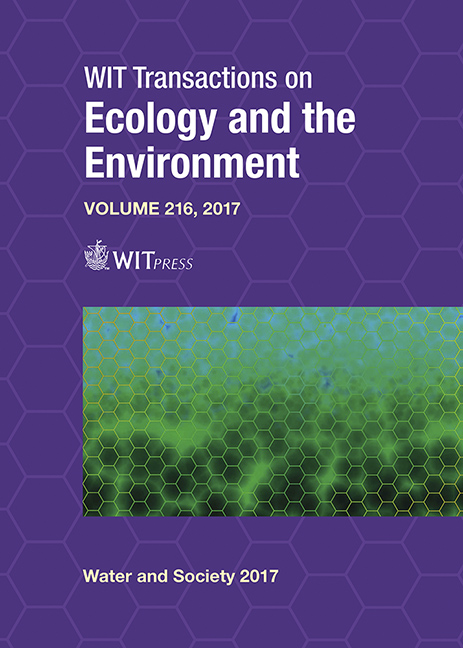LIFE AVERAGE DAILY DOSE OF RADIUM-226 ON SOME WATER SAMPLES COLLECTED AT GIRI AND KUJE AREA OF ABUJA, NORTH-CENTRAL NIGERIA
Price
Free (open access)
Transaction
Volume
216
Pages
6
Page Range
261 - 266
Published
2017
Paper DOI
10.2495/WS170251
Copyright
WIT Press
Author(s)
OMEJE MAXWELL, JOEL EMMANUEL SUNDAY, ADEWOYIN OLUSEGUN OLADOTUN, AKINWUMI SAYO AKINLOYE, PRAISEGOD CHIDOZIE EMENIKE, IMOKHAI THEOPHILUS TENEBE, OLATOKUNBO OFUYATAN, OKOLIE TOBIAS SOCIIS, HUSIN WAGIRAN
Abstract
226Ra concentrations were studied to represent the radiological risk of groundwater of the Giri and Kuje areas of Abuja, North-Central Nigeria. Two borehole water samples were collected from the Giri and Kuje areas of Abuja with a hand-dug well and Abuja Water Board as control. Inductively Coupled Plasma Mass Spectrometry (ICP-MS) was used to measure the concentrations of radionuclide of 226Ra exposed to the dwellers. The activity concentrations of 226R in groundwater supplies for drinking and domestic purposes ranges from 443 µBq L‒q to 849 µBq L–1, with the highest value of 849 µBq L–1 found at the Kuje borehole; the lowest value of 443 µBq L‒q was reported at the Giri borehole. This higher activity value found at the Kuje borehole may be attributed to a basaltic dyke intrusion that outcrops in the region which is used for a quarry. The concentration was used to calculate the Life Average Daily Dose of 226Ra individuals collected in the area, which was estimated to be 5.0 × 10–3 μg kg‒k day‒d and was found to be lower than the International Reference Level. This present study recommends further research on 226Ra levels and exposure to inhabitants via groundwater for a comprehensive conclusion to be drawn for future toxicity and toxicological health-related diseases.
Keywords
ICP-MS, radionuclide, radium-226, Abuja, groundwater





